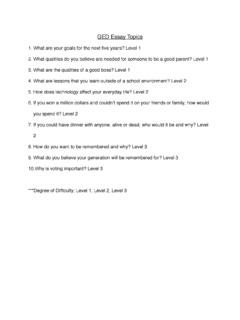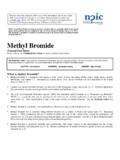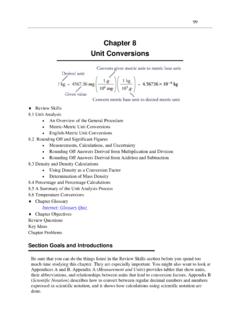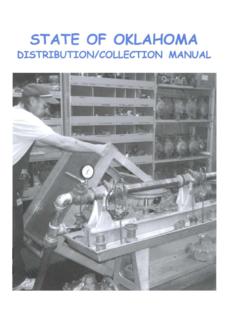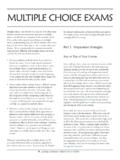Transcription of GED MATH STUDY GUIDE - Youth Enhancement …
1 GED math STUDY GUIDELast revision July 15, 2011 General Instructions If a student demonstrates that he or she is knowledgeable on a certain lesson or subject, you can have them do every other problem instead of every problem Always do the word problems at the end. These are the best problems to do within each lesson since they are most like what will be on the test A key to understanding math is organization and repetition. Encourage students to show their work in an organized manner in their notebooks. Scratch paper can be used but the students should be able to refer back to their notes if they forget how todo a certain type of Basics Lesson 1 Whole Number ReviewoStudent should be able to identify and round to place values Lesson 2 Operations ReviewoStudent should know how to perform long addition (including how to carry), subtraction (including how to borrow), multiplication (including placeholder use), and division (including remainders) by handExample 1.
2 Solve 435 254 25 = 0 remainder 4 The first number of the dividend is divided by the divisor. The whole number result is placed at the top. Any remainders are ignored at this 0 = 0 The answer from the first operation is multiplied by the divisor. The result is placed under the number divided 0 = 4 Now we take away the bottom number from the top number. Bring down the next number of the 25 = 1 remainder18 Divide this number by the divisor. The whole number result is placed at the top. Any remainders are ignored at this 1 = 25 The answer from the above operation is multiplied by the divisor.
3 The result is placed under the last number divided 25 = 18 Now we take away the bottom number from the top number. Bring down the next number of the 25 = 7remainder 10 Divide this number by the divisor. The whole number result is placed at the top. Any remainders are ignored at this 7 = 175 The answer from the above operation is multiplied by the divisor. The result is placed under the number divided 175 = 10 Now we take away the bottom number from the top number. There is still 10 left over but no more numbers to bring down.
4 With a long division with remainders the answer is expressed as 17 remainder 10 as shown in the diagram Answer: 435 25 = 17 R 10 Lesson 3 Distance and Cost FormulasoThis is the student s first introduction to formulas. Student should understandhow to use and manipulate cost and distance formulasoSkip Part A Lesson 4 Calculators on the GEDoSkip lesson 4 if student is familiar with calculator. Student should know how to use the following calculator functions:oPercentoPositive/negative buttonoFraction buttonoPower/exponentoSquare root Lesson 5 Filling in the Standard GridoSkip this lesson.
5 This should have been explained prior to the math pre-test. Lesson 6 Problem Solving: EstimationoPoint out key words to look for in problems: About, estimate, approximately, round oAlso explain that sometimes problems require you to round numbers before performing calculations and sometimes problems require you to perform the calculation and then round your answer at the endoSkip Part B Lesson 7 Problem solving: Set-Up Problems Order of Operations Parentheses, Exponents, Multiplication, Division, Addition, SubtractionoUse Please Excuse My Dear Aunt Sally or PEMDAS to rememberoMultiplication and Division are from Left to Right AND Addition and Subtraction are from Left to RightExample 1: 4(5 + 2) 9/3 Step 1: Parentheses 5 +2 = 7 4(7) 9/3 Step 2: Multiplication 4 x 7 = 28 28 9/3 Step 3: Division 9/3 = 3 28 3 Step 4: Subtraction 28 3 = 25 The answer is 25 Example 2.
6 125 7 + 8 x 2 Step 1: Multiplication 8 x 2 = 16 125 7 + 16 Step 2: Subtraction (Remember order of operations calls that we do addition and subtraction from left to right, so although A comes before S in PEMDAS, we must do subtraction first in this problem. The same rule holds true for multiplication and division)125 7 = 118 118 + 16 Step 3: Addition 118 + 16 = 134 The answer is 134 Example 3: 5(2 + 6) Calculate everything on top of the division bar and the bottom of the division bar separately, and then the last step will be to 1: Parentheses 2 + 6 = 8 and 7 2 = 5 5(8)4(7 2)4(5)Step 2: Multiplication (Note that number in front of a parentheses indicates multiplication)5(8) = 40 and 4(5) = 20 40 Step 3.
7 Division 40 20 = 20 The answer is 20 Decimals and Fractions Lesson 1 Decimal BasicsoStudent should be able to identify and round to place valuesoStudents should be able to compare decimals and order decimals from least togreatest and greatest to leastExample 1: Write these numbers from greatest to least: , , , Step 1: Line the numbers vertically and in line by decimal pointStep 2: Add zeros to each number to match the maximum number of place values. Note that adding zeros after the decimal point does not change the value of the number Step 3: Compare the numbers in each place value, moving from left to right, until you run out of numbers to compare.
8 Ones: 5 = 5 = 5 = 5 We must move to the next place valueTenths: 0 = 0 < 2 < 9 is the greatest number, is the next greatestHundredths: 0 < 7 is the next greatest, is the leastThe answer is , , , *Note that although some numbers may have more digits, this does not necessarily mean that the number is greater than a number with fewer digits Lesson 2 Decimal OperationsoStudent should know how to perform long addition, subtraction, multiplication and division with decimals by hand Lesson 3 Fraction BasicsoStudents should know how to go from mixed numbers to improper fractions and from improper fractions to mixed numbers.
9 Students should also be able to reduce a fraction to its lowest term. Lesson 4 Fraction Operations Lesson 5 Solving Problems Using a CalculatoroSkip this lesson Lesson 6 Filling in the Answer GridoSkip this lesson Lesson 7 Problem Solving: Fraction and Decimal Equivalencies oStudents should know how to go from decimals to fractions and from fractions to 1: Convert to a fractionNotice that the last digit (2) is in the hundredth place. Simply place 42 over = 42 = 21 Example 2: Convert 3 to a decimalYou should know that a fraction is also a division problem.
10 Simply divide numerator by the denominator:3 5 = , Proportion, and Percent Lesson 1 Using Ratio and Proportion to Solve ProblemsoStudents should know how to write ratios and should know that proportions are setting two ratios equal to each other. Students should also know that in order to solve a proportion that you need to cross multiply. Lesson 2 Understanding PercentsoPercent means per cent or per cent or out of a hundred. 501005 Lesson 3 Using the Percent FormulaoIgnore the percent diagram/box unless it is easy for you to understand.
